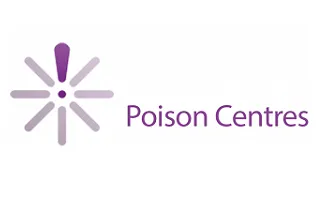Notification to Poison Centres: understanding Annex VIII to the CLP Regulation and its obligations

What obligations arise from Annex VIII of the CLP Regulation?
The obligation to notify hazardous mixtures is not new in Europe. What has changed with the introduction of Annex VIII of the CLP Regulation (Classification, Labelling, Packaging) is the harmonisation of the information to be submitted. The existing obligations across the different Member States of the European Union are replaced by a single set of information and a specific data submission format: the harmonised PCN (Poison Centres Notification) format.
A platform has also been set up to enable centralised notification through a single interface connected to each Member State. At present, not all Member States have yet agreed to connect their poison control centres to the European platform.
From now on, importers and downstream users placing mixtures classified as dangerous on the European market will therefore have to:
- Generate their UFI (Unique Formula Identifier),
- Carry out the notification of their mixture in the harmonised PCN format,
- Put their UFI on the label of their mixture.
The various deadlines for compliance are as follows:
- 1st January 2021 for products intended for general public or professional use
- 1st January 2024 for those intended for industrial use
- 1st January 2025 for previously notified, products that are already on the market and which are not subject to any changes until then (end of the transition period).
Declaring your mixture to poison control centres: a more complex process than it seems
Notification to the European Poison Centres is an essential step in the process of bringing your hazardous mixtures into compliance. In particular, for consumer and professional use, the obligation to declare in a harmonised format came into force on 1st January 2021.
To carry out the notification, you need to have a thorough knowledge of your mixtures, collect data from your suppliers and, most importantly, be familiar with the reporting process. This last part is the most delicate. Notifiers can:
- Go through IUCLID Cloud for users wishing to prepare their online notification,
- Go through IUCLID 6 for those who wish to keep their data offline,
- Use system-to-system integration for more advanced users, with automatic data generation.
Understanding IUCLID Cloud or IUCLID 6 can be tedious. For this reason, and all the more so if you have a large number of mixtures to declare, outsourcing is a solution to consider. Delegating the declaration of your hazardous mixtures to an expert consulting company can save you a considerable amount of time. EcoMundo, for example, supports its clients throughout this process and carries out all the compliance procedures related to the CLP regulation.
Wish to know more about poison centres notification?

For more information, do not hesitate to contact Renaud Germain-Thomas or one of our experts via our contact form, indicating the purpose of your inquiry.
What obligations arise from Annex VIII of the CLP Regulation?
The obligation to notify hazardous mixtures is not new in Europe. What has changed with the introduction of Annex VIII of the CLP Regulation (Classification, Labelling, Packaging) is the harmonisation of the information to be submitted. The existing obligations across the different Member States of the European Union are replaced by a single set of information and a specific data submission format: the harmonised PCN (Poison Centres Notification) format.
A platform has also been set up to enable centralised notification through a single interface connected to each Member State. At present, not all Member States have yet agreed to connect their poison control centres to the European platform.
From now on, importers and downstream users placing mixtures classified as dangerous on the European market will therefore have to:
- Generate their UFI (Unique Formula Identifier),
- Carry out the notification of their mixture in the harmonised PCN format,
- Put their UFI on the label of their mixture.
The various deadlines for compliance are as follows:
- 1st January 2021 for products intended for general public or professional use
- 1st January 2024 for those intended for industrial use
- 1st January 2025 for previously notified, products that are already on the market and which are not subject to any changes until then (end of the transition period).
Declaring your mixture to poison control centres: a more complex process than it seems
Notification to the European Poison Centres is an essential step in the process of bringing your hazardous mixtures into compliance. In particular, for consumer and professional use, the obligation to declare in a harmonised format came into force on 1st January 2021.
To carry out the notification, you need to have a thorough knowledge of your mixtures, collect data from your suppliers and, most importantly, be familiar with the reporting process. This last part is the most delicate. Notifiers can:
- Go through IUCLID Cloud for users wishing to prepare their online notification,
- Go through IUCLID 6 for those who wish to keep their data offline,
- Use system-to-system integration for more advanced users, with automatic data generation.
Understanding IUCLID Cloud or IUCLID 6 can be tedious. For this reason, and all the more so if you have a large number of mixtures to declare, outsourcing is a solution to consider. Delegating the declaration of your hazardous mixtures to an expert consulting company can save you a considerable amount of time. EcoMundo, for example, supports its clients throughout this process and carries out all the compliance procedures related to the CLP regulation.
Wish to know more about poison centres notification?

For more information, do not hesitate to contact Renaud Germain-Thomas or one of our experts via our contact form, indicating the purpose of your inquiry.







